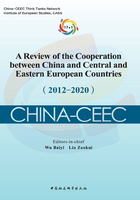
3. Welcoming Project-based Third Party Cooperation in Adherence with the Principles of Openness and Inclusiveness
It has been eight years since China-CEEC Cooperation was established in 2012. Since then, it has attracted much attention, and more and more countries and organizations outside the format have expressed a strong interest to get involved. Greece (joining the format in 2019), Austria, the European Bank for Reconstruction and Development (EBRD), Belarus and Switzerland have shown strong interest at different stages.
At the successive China-CEEC Summits, representatives of the EU institutions and some European countries were invited. At the third Summit held in Belgrade in 2014, representatives of Greece were present and discussed with their Chinese, North Macedonian, Hungarian and Serbian counterparts ways to jointly build the China-Europe Land-Sea Express Line. At the fourth Summit held in Suzhou in 2015, representatives of Austria and EBRD were present as observers, further strengthening the format. Located in Central Europe, Austria has close ties with the Visegrad Group and has considerable influence in CEECs. It is, therefore, very interested in the initiatives under the China-CEEC framework and is ready to take an active part in it. EBRD, as a world renowned developmental financial institute, offers extensive financial services in CEECs and has accumulated a lot of investment experience. The involvement of EBRD has offered opportunities of financial cooperation between China and CEECs. Belarus and Switzerland participated in the fifth China-CEEC Summit in Riga in 2016 as observers. Belarus is an important hub between China and Europe and a key point connecting Russia and CEECs. Switzerland has extensive interests and presence in CEECs. Since the accession of some CEECs into the EU in 2004, Switzerland has sped up its cooperation with CEECs, with Swiss businesses expanding its investment in the region. In the decade from 2004 to 2014, the eastward enlargement of the EU helped Switzerland win a new market of 75 million consumers. To protect its strategic investment, Switzerland has financed over 300 joint projects in CEECs in the economic, tourism, health and energy sectors, with a total value of 1.3 billion Swiss francs.[6] The involvement of Switzerland has further advanced China-CEEC Cooperation.
Greece joining the format is a demonstration of the spirit of openness and inclusiveness that China-CEEC Cooperation advocates. At the China-CEEC Summit in Dubrovnik in 2019, Greece was invited to officially join China-CEEC Cooperation. The addition of Greece did not change the geographical range of the format at its beginning, as Greece is also part of the Balkans and southeastern Europe. But it does enrich the format both in formality and substance, as it is the cradle of the European civilization, part of the Old Europe and an advanced economy, and its capitalist development follows a different path from that of CEECs.
The evolution of China-CEEC Cooperation proves that it is not a closed format. Rather, it advocates openness, inclusiveness and mutual benefit. As long as there is readiness, need and initiatives, the parties involved join hand to put them into practice. The format has been proven to be effective and appealing.